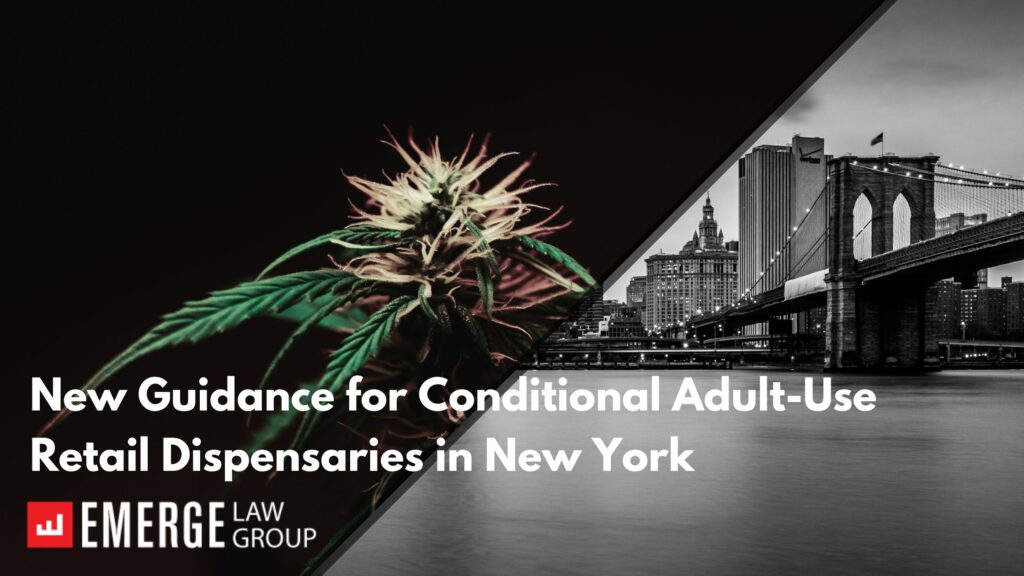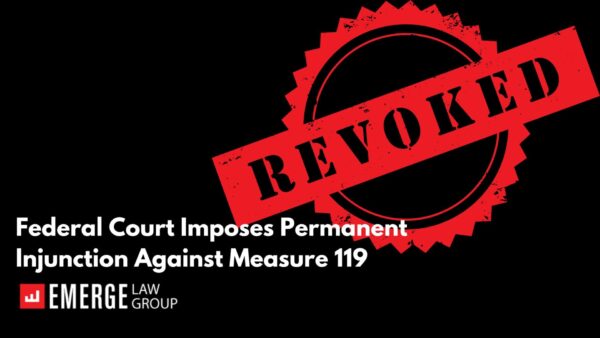Authors:
Duncan Delano, Attorney at Emerge Law Group
Brittany Tovar, Law Clerk at Emerge Law Group
On October 28, 2022, the New York Office of Cannabis Management (“OCM”) issued a new guidance document (the “Guidance”) to assist Conditional Adult-Use Retail Dispensary (“CAURD”) licensees plan their operations before OCM adopts formal regulations. We summarize the Guidance below, including most notably, that OCM reversed course regarding where licensees can locate their dispensaries. Rather than selecting locations for licensees through the Dormitory Authority of the State of New York (“DASNY”), as before, OCM appears now to allow licensees to use their own qualifying properties.
CAURD Licensees May Now Use Their Own Properties.
OCM had previously stated that CAURD licenses “may not be right for” an applicant desiring to use their own property to locate their dispensary. But now, according to the Guidance: “Certain retail dispensary licensees may be permitted to select the location of the licensed premises or relocate the location of the licensed premises,” reflecting a complete reversal of OCM’s previous position. The Guidance still lists certain restrictions for qualifying locations, including compliance with local zoning ordinance and the prohibition on locations on the same road and withing 500 feet of a school’s grounds or “community facility.” Further, a dispensary may not be located on the same street or avenue and within 200 feet of a building used exclusively as a house of worship. Nevertheless, by now allowing CAURD applicants to select their own properties, rather than relying on DASNY to do so for them (that webpage is still loading…), OCM just may be closer to fulfilling its promise to open NY’s first dispensaries this year.
Operations
The Guidance also covers some operational requirements and restrictions. For example, dispensaries may not operate between 12 a.m. and 8 a.m. without special municipal approval, but municipalities must allow dispensaries to operate at least 70 hours per week. The Guidance allows for delivery, drive-thrus, and walk-up windows but prohibits customer loyalty programs and neon-colored advertising. The Guidance also prohibits dispensaries from selling branded apparel and merchandise containing any brand other than their own.
Supply and Inventory
Under the Guidance, CAURD licensees may only purchase their inventory from licensed distributors, which, for now, includes only Adult Use Conditional Cultivators and Adult Use Conditional Processors who were licensed earlier this year and whose first crop is drying at this very moment. Dispensaries can purchase the product on credit, but payment must be made within 90 days. The Guidance also outlines an inventory tracking system and mandates initial inventory reporting to OCM.
Additional Covered Topics
The Guidance also covers safety and security, including surveillance camera and “secure storage” requirements. It further outlines employee training requirements and ownership restrictions, including the prohibition against simultaneous ownership in both retail and product supply licenses.
The Guidance leaves many questions unanswered, however, including how Social Equity Fund disbursements will be structured and made. We will continue to monitor OCM’s communications as they evolve (sometimes without notice and at lightning speed). So stay tuned!
You can find a link to the Guidance here.





